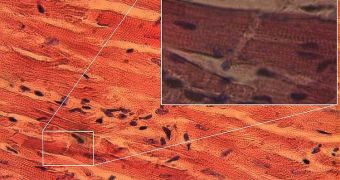McGill University investigators recently completed a study that may help scientists advance their understanding of how the human heart works, and how it's influenced by diseases. Their work could also aid in the creation of better, artificially-engineered heart tissues.
The team found that all muscle fibers in the heart wall are arranged into a special, minimal surface, called the generalized helicoid. The reason why this is interesting is because such structures only occur in nature as a response to complex physical problems.
In a paper published in the latest issue of the esteemed journal Proceedings of the National Academy of Sciences (PNAS), the researchers explain the concept of a minimal surface as the film that forms on a wire frame when dipped in a soapy solution.
The work also implies that surgeons and doctors were right to consider the geometry of heart muscle fibers as extremely important for how the organ operates. One of the most interesting aspects these cells display is that they are aligned in such a way that they form helices around the two ventricles.
While the disposition and shape of individual heart muscle fibers is relatively well known, limitations in study techniques have thus far prevented researchers from gaining a deeper understanding of the rationale behind fiber group geometry.
By using a medical imaging techniques called diffusion Magnetic Resonance Imaging (dMRI), experts at McGill, Yale University and the Eindhoven University of Technology were able to determine the patterns in which these fibers bend and interact, in humans, dogs and rats.
A similar pattern was found throughout all species in the study. The group also augmented the dataset by creating computer models of these special muscle fibers, EurekAlert reports.
“You can think of it as analyzing a clump of hair instead of an individual hair strand. We've discovered that the clump bends and twists in the form of a particular minimal surface, the generalized helicoid – and this is true across species,” professor Kaleem Siddiqi explains. 0
“It's not particular to just one mammal. The implications of these findings are broad,” concludes the expert, who holds an appointment with the McGill School of Computer Science.

 14 DAY TRIAL //
14 DAY TRIAL //